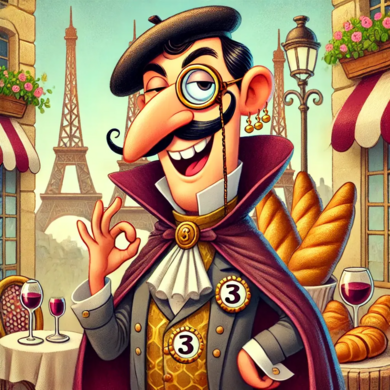French Three Count 786

This pattern is period 3 with three different throws. These patterns are usually relatively hard, despite the short period. I think that is because we usually practice doing the same kind of throw in a row and this pattern does not have any of that.
Patterns to do before this one
- 1-person 4 club fountain with doubles
- Why Not
- Not Why
- 5-count popcorn (async) (78687 and 7a666)
French Three Count
Sequence: A starts with 4 clubs and has straight passes, B starts with 2 clubs and has crossing passes.
A 2|2: P S H B 2|1: H P S
P=pass
S=self
H=heff
A can throw the complete (first half) sequence of the pattern plus one pass before running out of clubs. So if B only catches all passes without throwing to A, A can get used to the new sequence without the stress of having to catch incoming passes.
Color coding: The pattern is period 3, so the self is magic and can be color coded.
Compatible Patterns
3-club patterns
- Lame Duck zap-zip-zip 526 combined pattern
5 club patterns:
7 club patterns:
Switching to 7-club 3-count
To switch from french 3-count to normal 966 3-count, the heff becomes a double pass.
This is particularly easy if you are doing the crossing single passes, as the heff becomes a straight double pass - and specially at the beginning heffs tend to fly forwards towards the other juggler anyway, so this comes kind of natural.